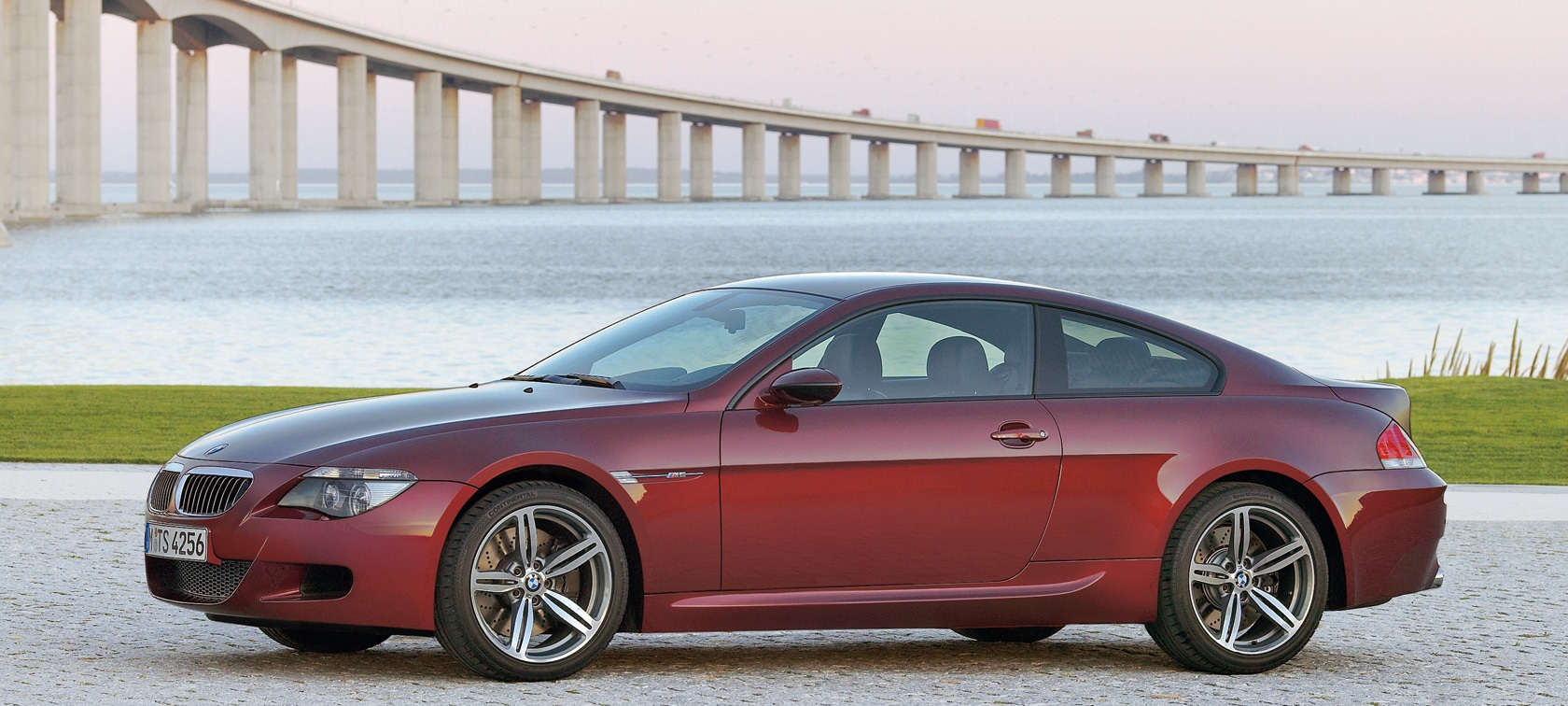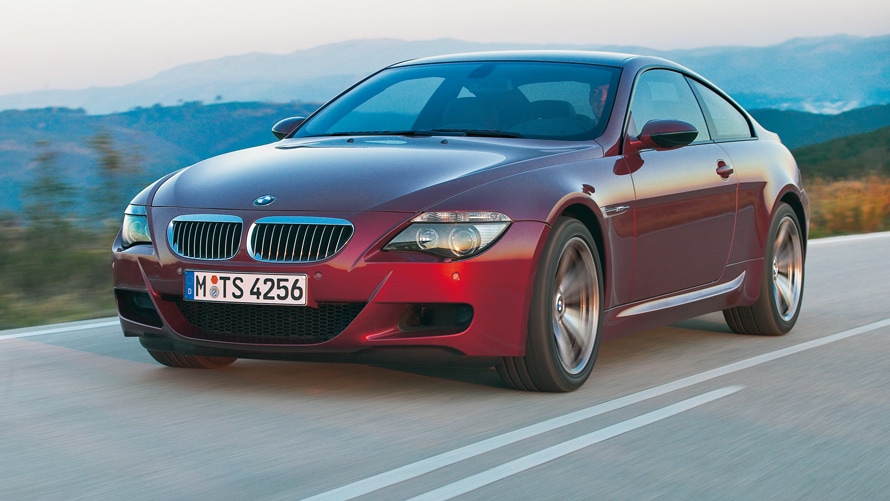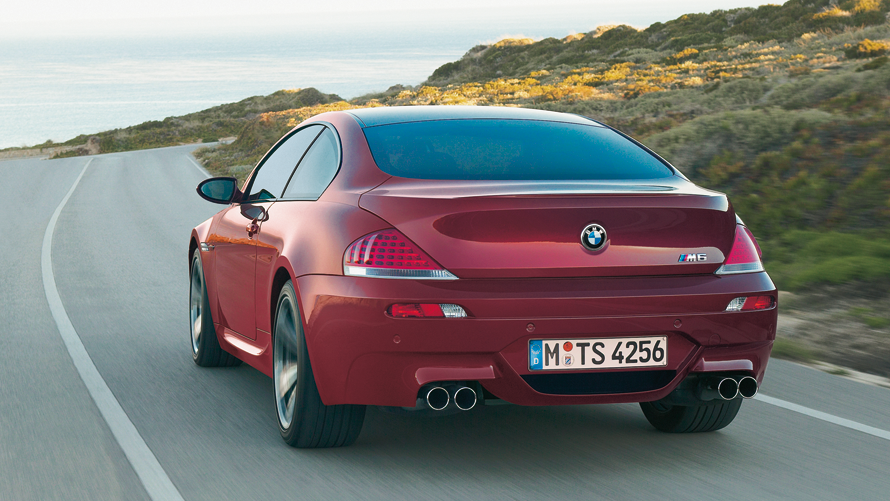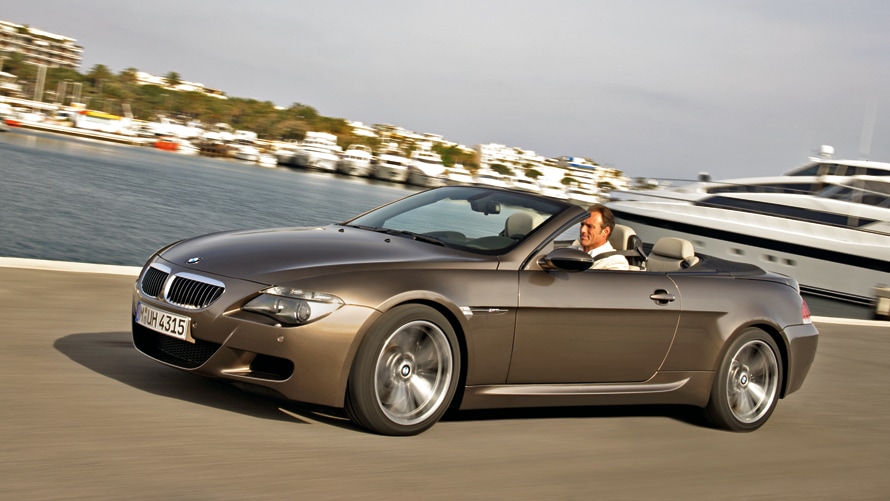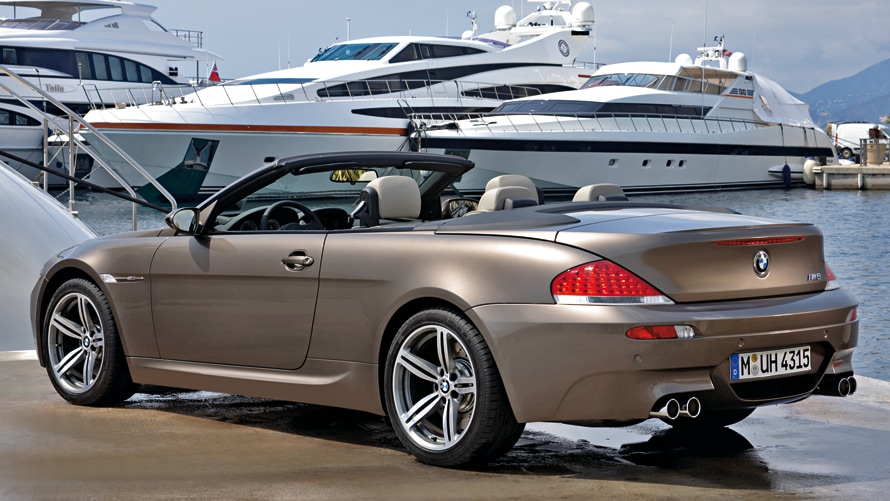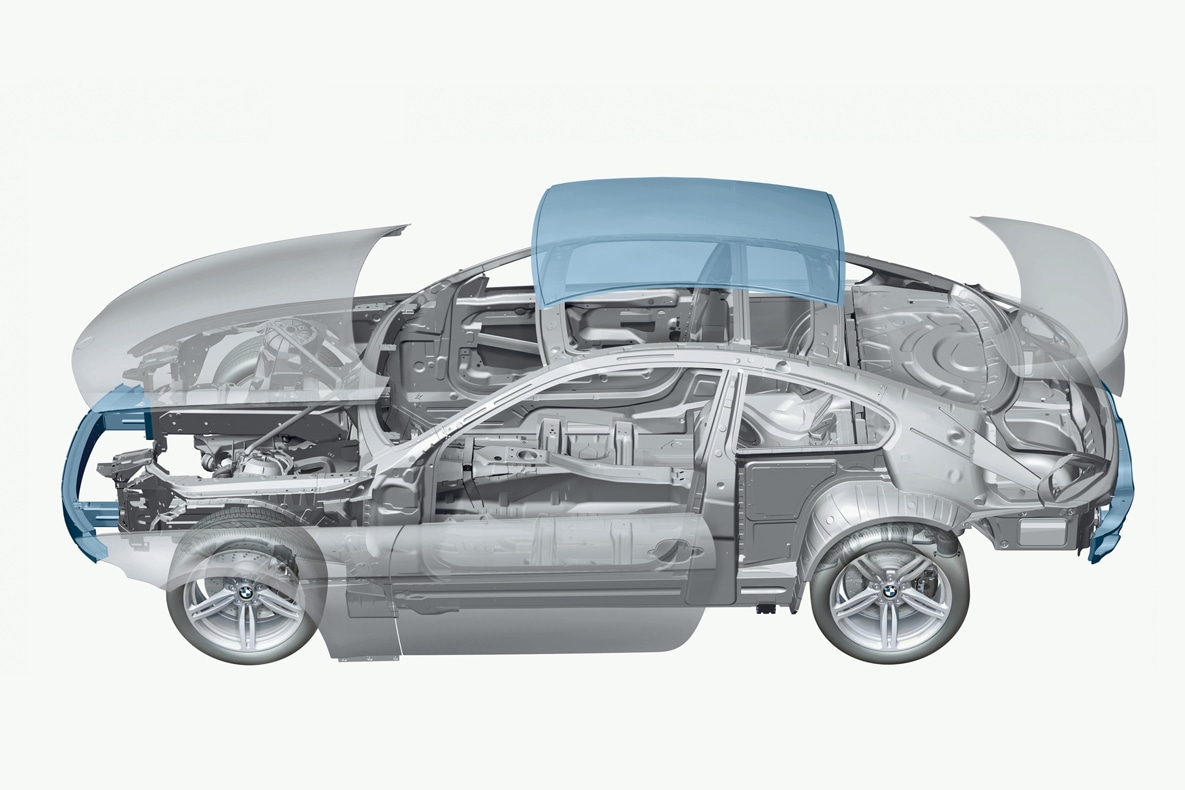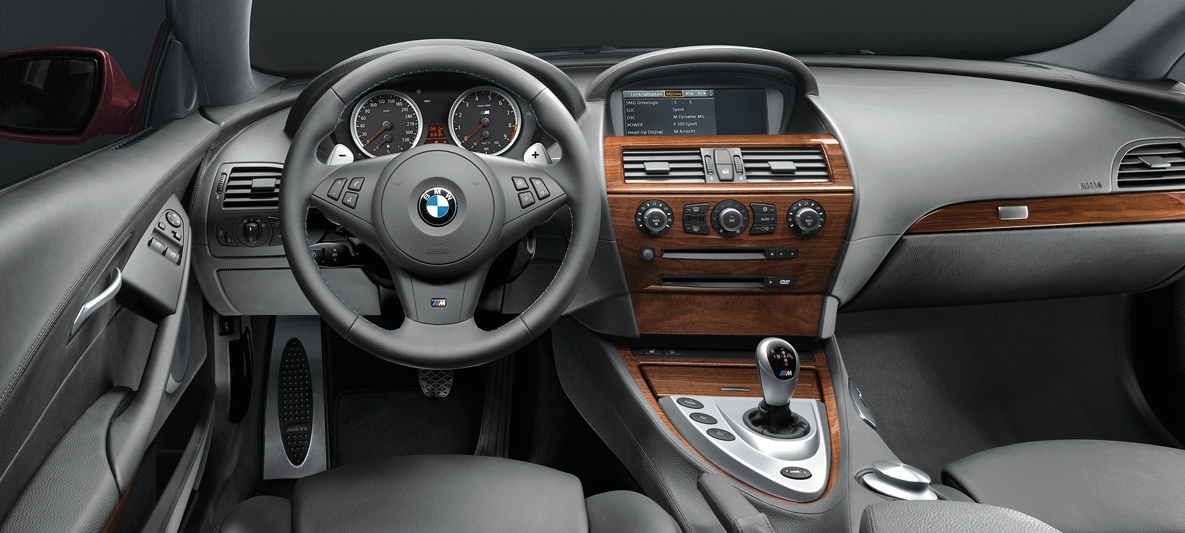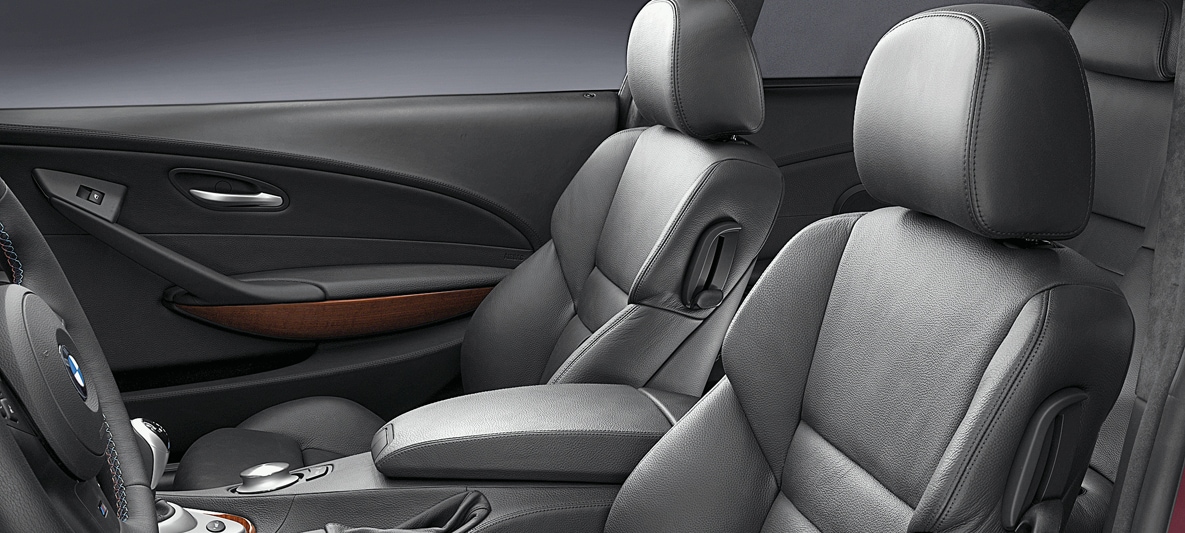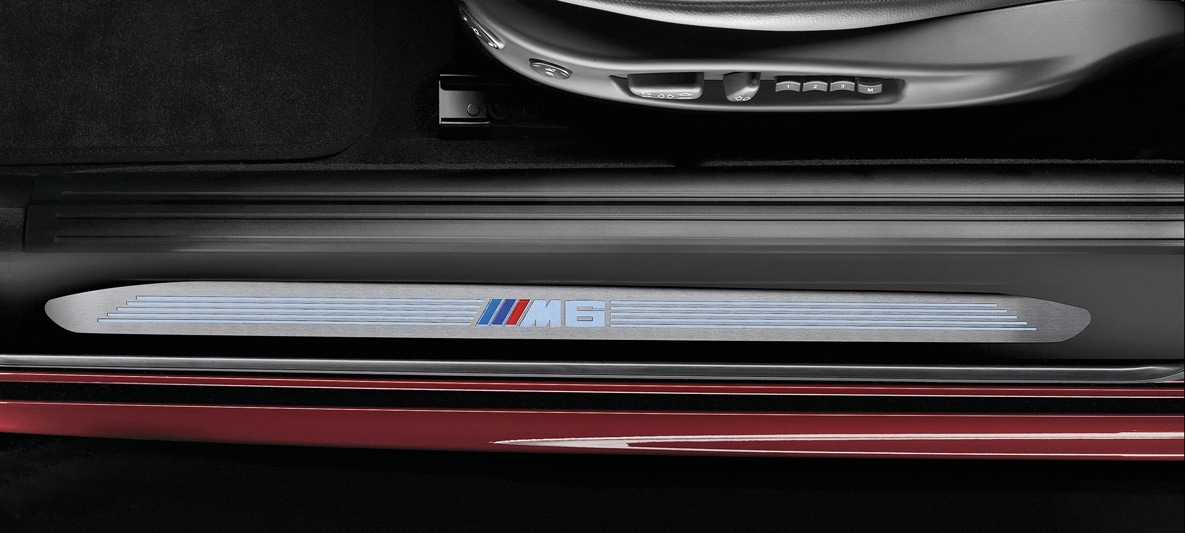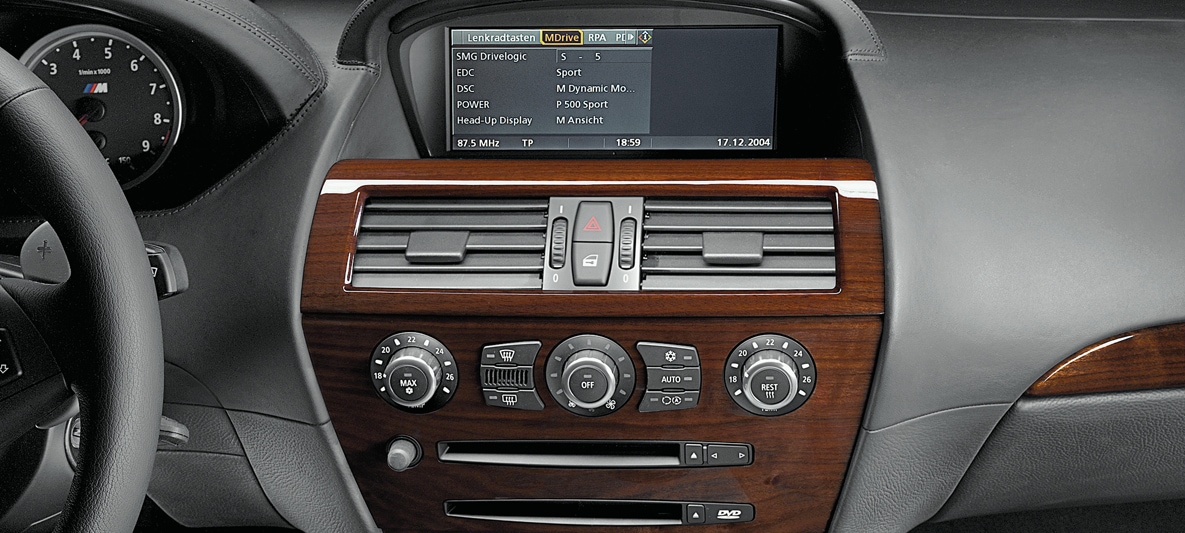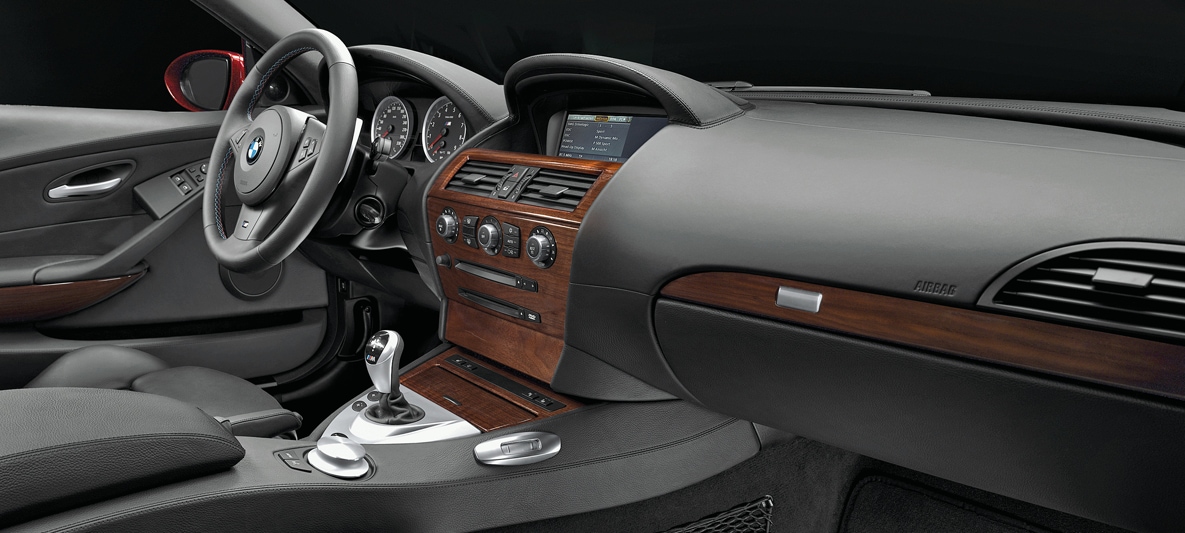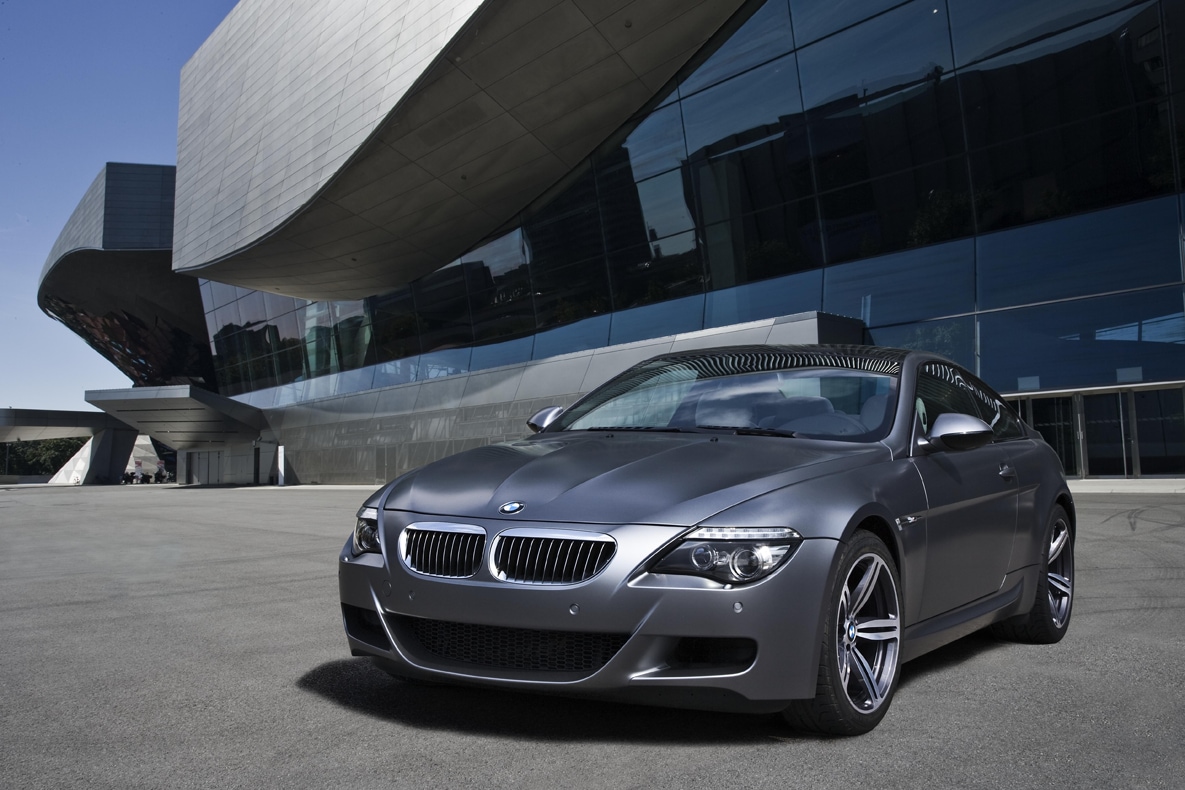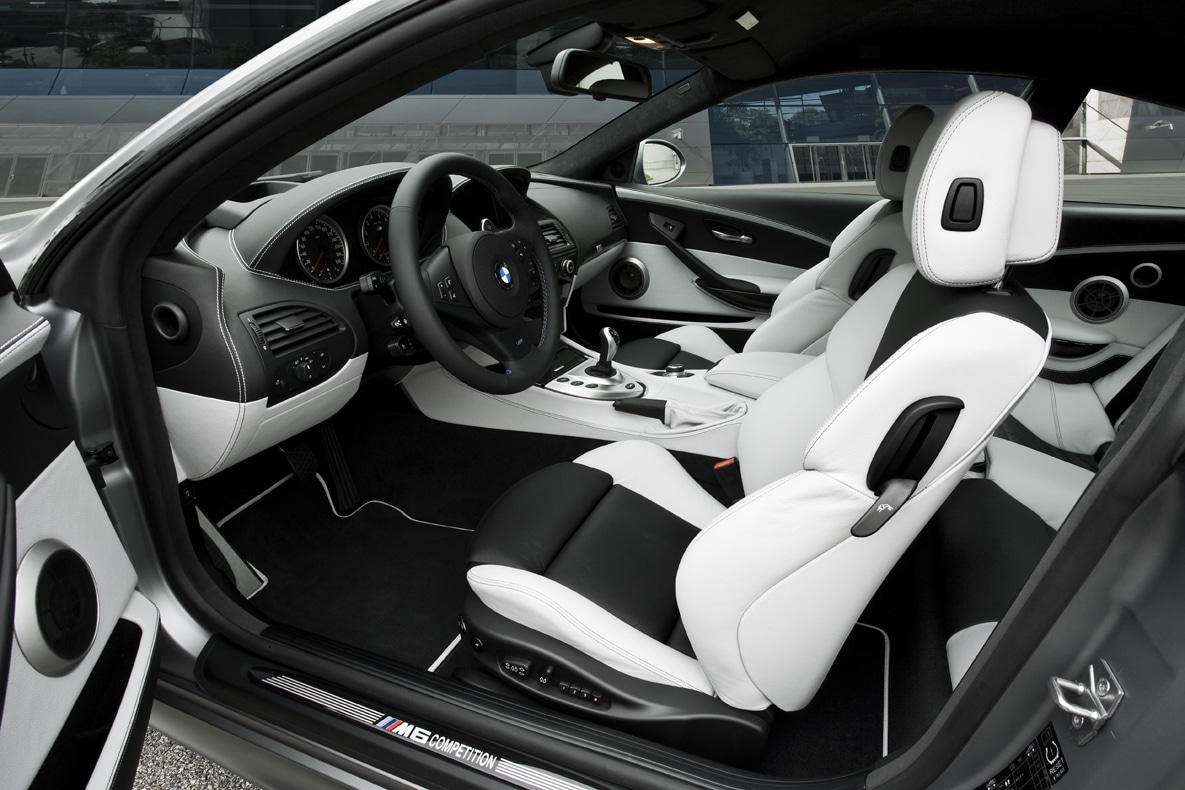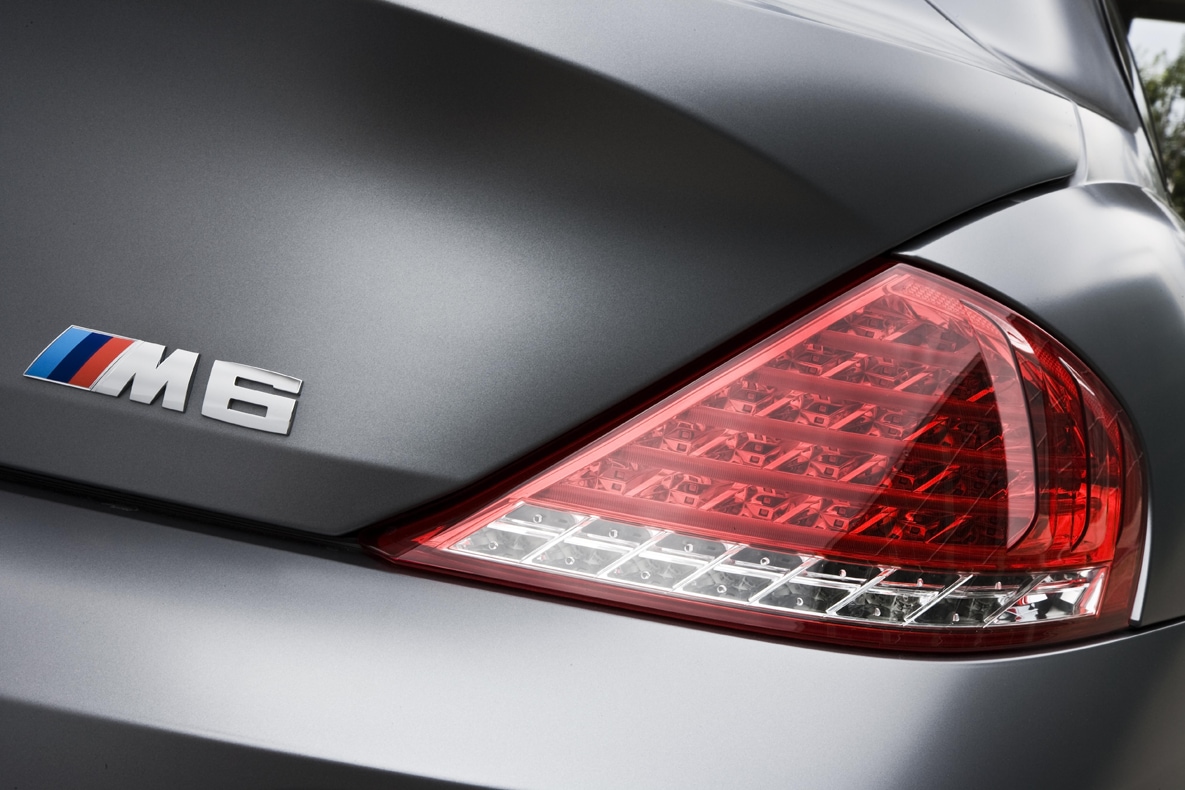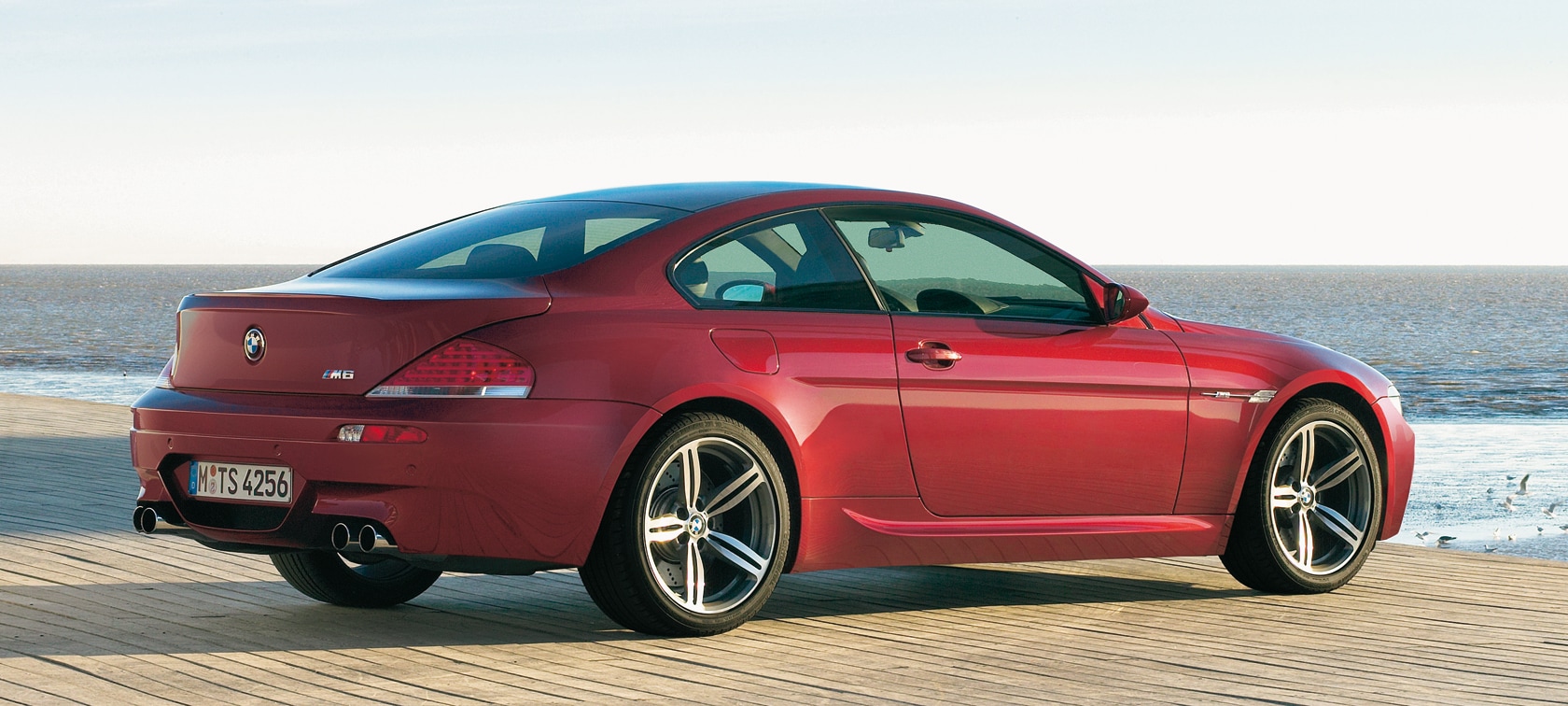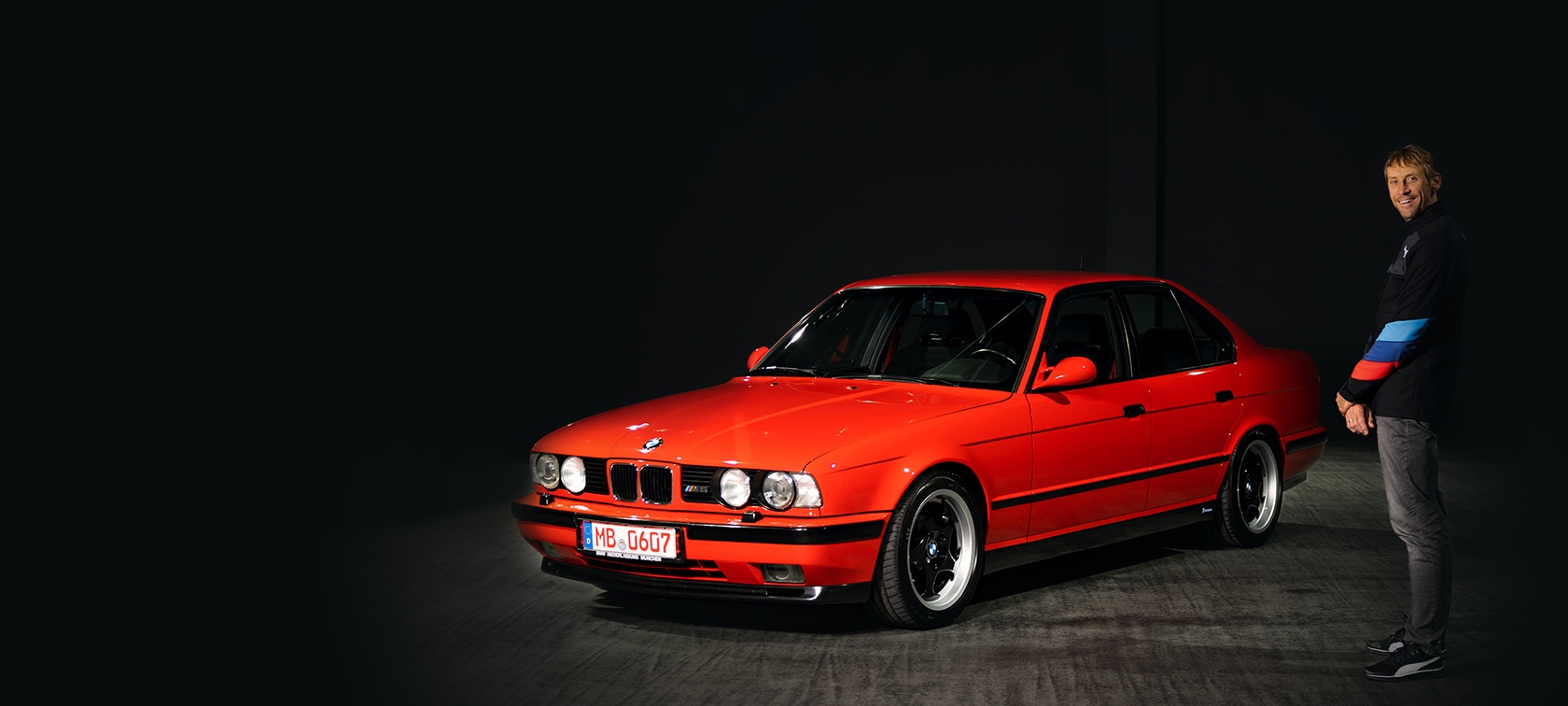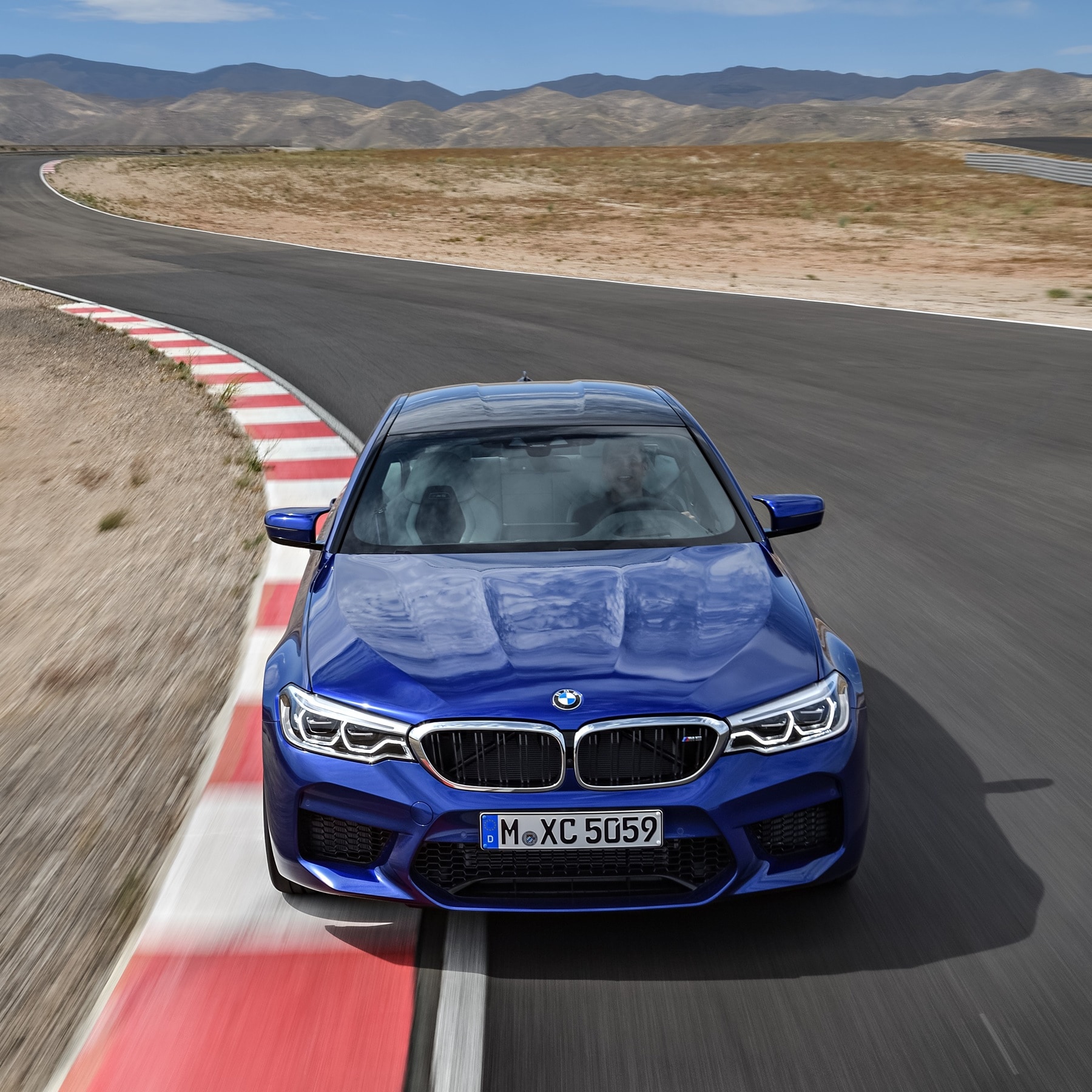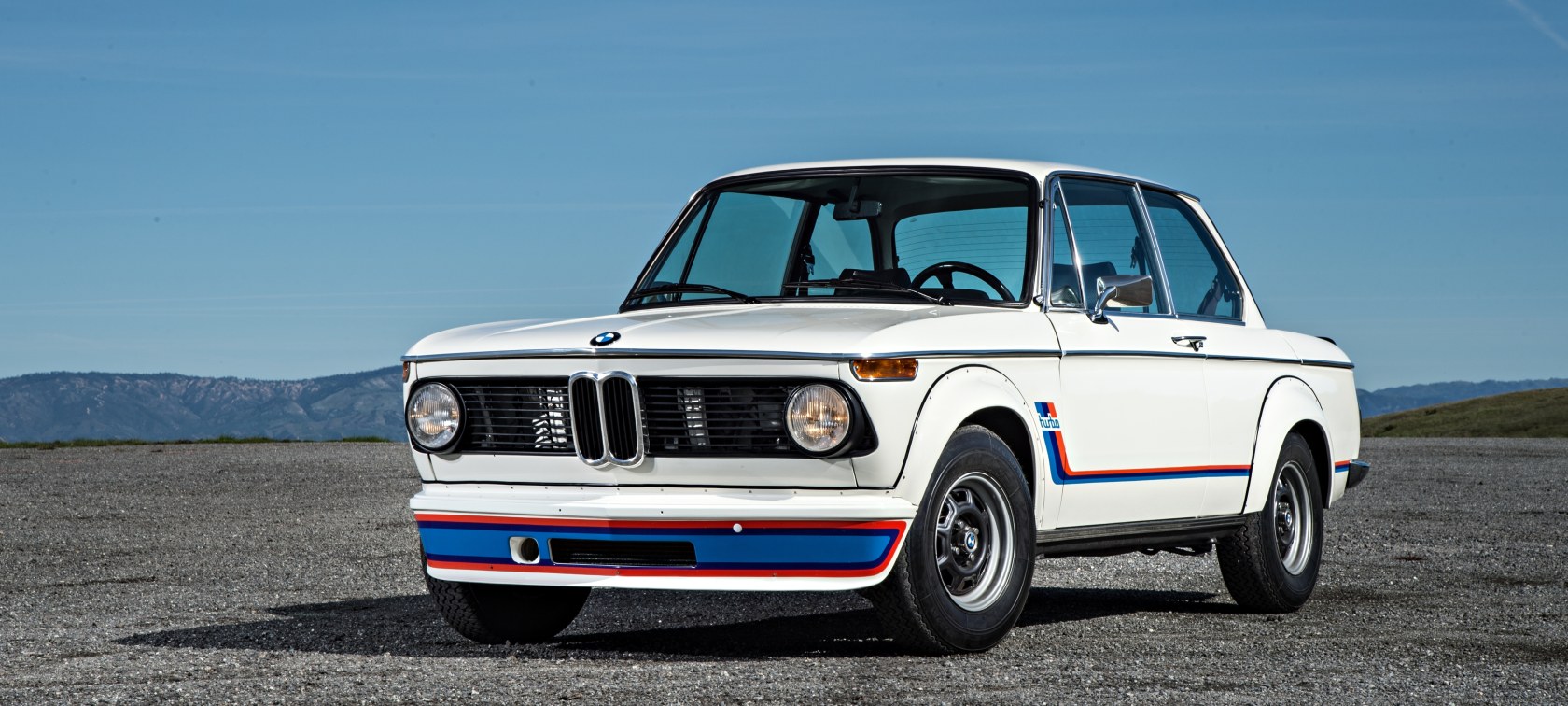In 2005, with the BMW M6 E63 and E64, BMW M once again took up the thread of the especially sporty coupé originally spun by the M635CSi: the driving performance of the 286 hp-strong ancestor turned heads in the sportscar world. With two doors, a low window line and a stretched look, the sportiest interpretation of the BMW 6 series pursued the concept of a coupé designed for top performance. BMW M thus closed the gap in this segment left by the BMW 8 Series E31 after 1999. The plan to equip the elegant 2+2-seater with the incomparable V10 engine from the BMW M5 E60, presented in Geneva one year before, proved to be invigorating. It was the ticket to the world of super sports coupés.

An overall package that rightly lifts the M6 into the select circle of sportscar giants.
5 POWERFUL FACTS:
- Descendant of the legendary BMW M635CSi
- Max. output: 373 kW (507 hp)
- Carbon chassis components
- Production period: 05/2005 to 09/2010
- Units produced: 14,152

IN THE TOP CLASS.
Typical M: The sophisticated overall package of innovative technology and progressive design made the BMW M6 E63/E64 an emotional yet rational masterpiece. While the basic exterior design came from Adrian van Hooydonk, overall responsibility for the final vehicle lay with Chris Bangle. With Boyke Boyer in charge of the exterior and Mike Ninic the interior, the BMW M6 could be designed as a confident, yet classic luxury coupé. Thus, the legacy of the legendary BMW M635CSi was a worthy one from the word go.
On the outside, the BMW M6 had only modest differences to the tamer versions in the series. The most obvious change was four end-pipes instead of the usual two and a bigger front apron with larger air inlets. Otherwise, the exterior was restrained, with the focus on non-visible components. Successfully: the specialist press like AUTO BILD put the BMW M6 in the “select circle of sportscar giants”.
A UNIQUE ENGINE.

A UNIQUE ENGINE.
In line with their usual standards, BMW M transferred extensive motorsport insights to the drive train and suspension of the BMW M6 E63/E64. With the Formula 1-inspired 10-cylinder motor, the engineers brought an unusual engine to life: Without the help of a supercharger, the very rev-happy five-litre V10 developed 373 kW (507 hp) and transferred its massive power to the rear wheels up to a rev limit of 8,250. The rear axle had an electronic differential lock – for maximum propulsion. The maximum torque of 520 Nm was available at 6,100 rpm, 80 % of it already at 3,500 rpm. To put it another way: power was always available in abundance.

Related to its mass, with a power to weight ratio of 3.37 hp/kg the BMW M6 coupé performed even better than the BMW M3 E90 from 2007 with 3.38 kg/hp.
„ENGINE OF THE YEAR“.
0-100 km/h from a standing start was managed effortlessly by the M6 coupé in 4.6 seconds. Assisted by the electronic Launch Control if desired. The convertible, which had its world premiere in the summer of 2006 at the British Motor Show, was only two tenths slower, despite its higher weight. Beyond this mark, the drive train pulled out all the stops and accelerated the M6 easily to 200 km/h in 13.1 seconds. At 250 km/h, the electronic limiter put an end to the irresistible forward thrust. The speedometer gave you an idea of where the power-driven journey would have gone without a limiter: the dial ended at 330 km/h. It was not without reason that the motor won the Engine of the Year award two years in a row in 2005 and 2006.
Apart from the actual high-rev concept, the engine was equipped with further refinements straight from the racetrack like electronically controlled individual throttle valves, ion current knock control and an oil supply optimized for dynamic driving.
TECHNICAL DATA BMW M6 E63/E64.

TECHNICAL DATA BMW M6 E63/E64.
Engine: V10
Displacement: 4.999 cm³
Power output: 373 kW (507 hp) at 7,750 rpm
Torque: 520 Nm at 6,200 rpm
Transmission: sequential 7-speed gearbox (SMG)
Top speed: 250 km/h (electronically limited)
Weight: 1,785 kg (Convertible: 2,005 kg)
Length: 4,871 mm
Width: 1,855 mm
Height: 1,372 mm (Convertible: 1,377 mm)
Wheelbase: 2,781 mm
Units produced: 14,152

You used to think in km/h. Now you’ll be thinking in heartbeats per second.
SPORTSCAR FROM HOOD TO TRUNK.

SPORTSCAR FROM HOOD TO TRUNK.
The BMW M6 wasn’t only a sportscar under the hood – but through and through too. The deep, solid side skirts for example ensured optimal air flow for the underfloor and improved the aerodynamics. One exclusive feature of the series were the forged aluminium 19-inch wheels, which, thanks to the five spokes, allowed a free view of the brake system – and saved 1.8 kg compared to similar rims. The tyres too, 245/40 ZR 19 at the front and 295/35 ZR 19 at the back, spoke the language of the racetrack. Even the lateral slats with integrated indicators and M logo weren’t just decorative: their shape was refined in the wind tunnel and reduced uplift on the front axle.
Further weight was saved by the use of bumper brackets/beams made of carbon-fibre reinforced plastic (CRP) or carbon. In the case of the M6 coupé, the high-strength lightweight material was also employed for the roof element. That meant a weight saving of about 4.5 kg and lowered the vehicle’s centre of gravity, which in turn meant higher speeds in bends and reduced roll and pitch movements. Nuances on the way to perfection.
A CHASSIS LIKE NO OTHER.
High-strength aluminium was the basis for a chassis that was equal to the high dynamic demands of the BMW M6. Apart from the unaltered basic geometry of wheelbase and track, the M engineers made some big changes. Among other things, they raised the negative camber and added special air intakes for the transmission; the Servotronic regulated the steering assistance independent of speed and revs. Frame, wishbones and joints were also adapted for maximum performance. Additional agility was supplied by the high-performance compound brake system which could stop the car travelling at 100 km/h in 36 metres. Suspension and drive train as perfectly matched partners in every situation.
COMFORT AND SYMPHONY.
Typically for BMW M, in addition to the best possible driving performance the interior had the usual standard of luxury. The M sport seats were as dynamic as they were comfortable and offered a very high level of lateral grip. The BMW Individual shellac finish was series standard, along with a full leather interior. Various details in ebony and Alcantara-covered surfaces on dashboard, door trim and roof were optional.
For an ultra-emotional sonic image of the drive train, the unique engine sound of the two cylinder banks and sports exhaust was further sharpened in comparison to the BMW M5 E60. This could be heard inside the car from the moment the car was started, which took place in the so-called P400 programme, with 400 hp and more comfortable overall tuning for city driving for example.
One press of the button on the central console then brought all 507 hp to life. The driver also had 11 Drivelogic programmes for the sequential transmission to choose from, which could be used to adapt the shift characteristic to suit individual preference and the desired level of driving dynamics. The M Dynamic Mode could take you to the limit: only then, when the car was close to the edge of what was physically possible, would the DSC stability control kick in and allow the driver to lose the rear end in corners.

Effortlessly, the five-litre naturally aspirated engine pushes the M6 onwards. As quick as a flash, the rev counter needle goes from left to right. If you don’t watch out, you head straight for the limiter.
ONE M FOR FOUR.

ONE M FOR FOUR.
As uncompromisingly sporty as the BMW M6 was, the automobile was also extremely versatile. The two full-size rear seats and a 450-litre trunk volume in the coupé or up to 350 litres in the convertible turned the sportscar into a comfortable touring vehicle for four people. Something that wasn’t offered in this form by most traditional sportscar makers.
A TIMELESS CAR FROM BIRTH.
Already during production, the perfectly matched combination of a sporty yet restrained look, high-performing M suspension and V10 engine made the BMW M6 E63/E64 a unique and desirable piece of automobile history that has lost nothing of its charm today.
In October 2007, the car underwent a modest facelift. The most striking change was the third brake light integrated in the rear spoiler. In the new interior, haptically improved materials were easy on the hands and the leather in the convertible had Sun Reflective Technology which reduced the effect of the sun’s heat. In autumn 2009, M presented a 100-vehicle limited edition of the coupé, the Competition Limited Edition. The exclusive matte paintwork in Frozen Grey was a strong nod to the optimized suspension, which had also been lowered by 10 mm at the front and 12 at the back.
BMW M6 CSL PROTOTYPE.

BMW M6 CSL PROTOTYPE.
BMW M took this truly unique M6 and optimized the aerodynamics to the limit of what was possible. To this end, the designers not only fitted the BMW M6 CSL E63 with lightweight door panels and central console, they also installed active elements for the airflow, with an automatic rear wing and retractable ram lips at the front in order to further increase the car’s performance. This prototype also had double-strut exterior mirrors, which have now long been standard on the sportiest BMW models. However, the vehicle itself was never put into series production.
ALREADY A MODERN CLASSIC.
Almost half of the 14,152 (9,087 coupés and 5,065 convertibles) BMW M6 produced from the summer of 2005 to the summer of 2010 went to customers in the USA, only 1,183 coupés and 541 convertibles to customers in Germany. The high-performance models aren’t 20 years old yet, but their strong character and unique drive technology have already made the BMW M6 a sought-after modern classic car. The best bargains on the market cost around €30,000. In relation to the original price of €106,500 for the coupé (convertible from 09/2006: €116,300) not unusual figures for a model with a very strong character which has a special place in the over 50-year history of BMW M.

